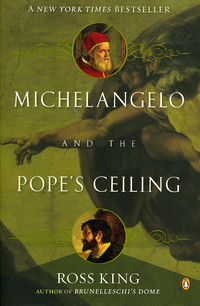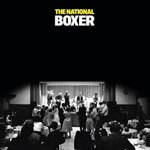Michelangelo and the Pope’s Ceiling
Todays book report is on Michelangelo and the Pope’s Ceiling written by Ross King. As it relates to a mixture of Art, the Renaissance, Religion and plenty of history the book jumped off the store shelves into my hands and it just seemed like a logical choice for my next reading. I have always been fascinated by history, as real life can sometimes be much more interesting than fiction. That being said:
Obviously the story revolves around Michelangelo and the Sistine Chapel. I think the book succeeds in trying to portray the difficult nature of how difficult it is to fresco much less fresco for an inexperienced painter like Michelangelo.
Yes, we would not expect this but Michelangelo was not the experienced painter but had more knowledge in sculpture as his statue David would suggest.
Intermixed in the story of trying to design, implement and paint the Sistine Chapel, we are fed plenty of tidbits of European history, especially in regards to the individual that commissioned Michelangelo to paint the ceiling in the first place, Pope Julius II.
Not really having an impression of Michelangelo coming in to the book, I found him to be in many respects a very strong individual, devoted to his work, a complete perfectionist who both loved and loathed what he did. In one case, he would rant on and on to his family about how much he hated his work but on the other hand put so much of himself into his work. In a day when the images and the stories that were being painted were in themselves very much controlled by those that were commissioning the work, the artist didn’t have the same freedom to express himself like the current day artist. The images and portraits are told from the point of view of the Church with Michelangelo’s Artistic impression still in place. For instance, when the chapel ceiling was finished, Pope Julius wanted there to be more gold involved in the clothes of the various old testament pictorals. Michelangelo flatly refused informing the Pope that it would not be realistic to add gold and wealth to biblical characters that were not wealthy nor rich.
I am not an artist by any stretch of the imagination so what I found refreshing about this book is that it was not a technical guide to the creation of the Sistine Chapel but rather a detailed history and story of the Sistine Chapel Ceiling from the onlooker that appreciates art. The technical issues that are brought up are just to reinforce just how difficult it was to fresco art as it was pointed out that even Leonardo DaVinci had issues in frescoing certain projects and even abandoned one from lack of success. By understanding all the work and effort that Michelangelo put into the work I can only say from a novice art fan that I am more impressed with his work now than ever before.
For those of you that are interested in history, I also found some of the tidbits of the Roman Catholic Church quite fascinating. The Roman Catholic Church is much different than it is today, with far much power then. We also see that understanding Christianity was not a prerequisite of having Papal power during that time. The Pope was more than just a figurehead for the Catholic Church but was also a monarch.
I do need to make it to see this amazing piece of work at some point, sit in the pew and just stare upward and be amazed at its sheer beauty.



